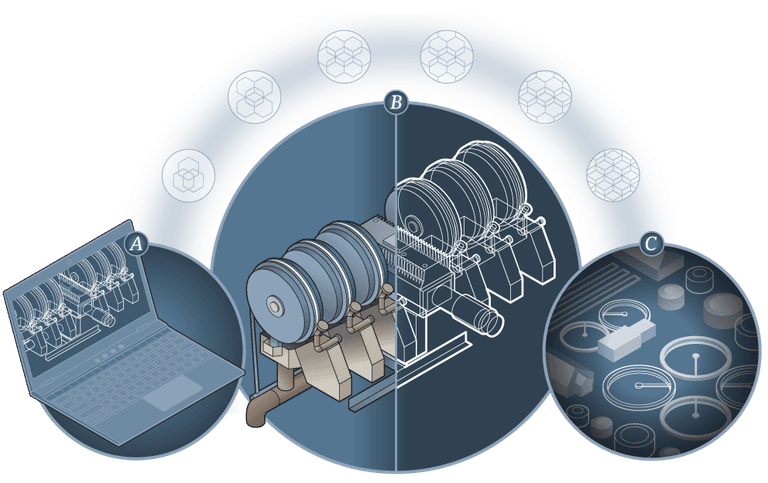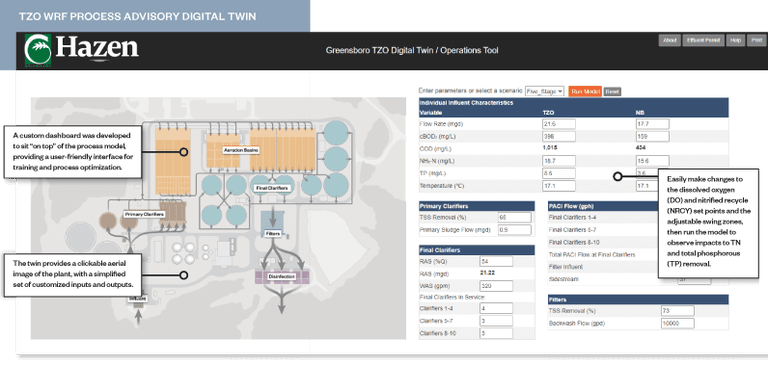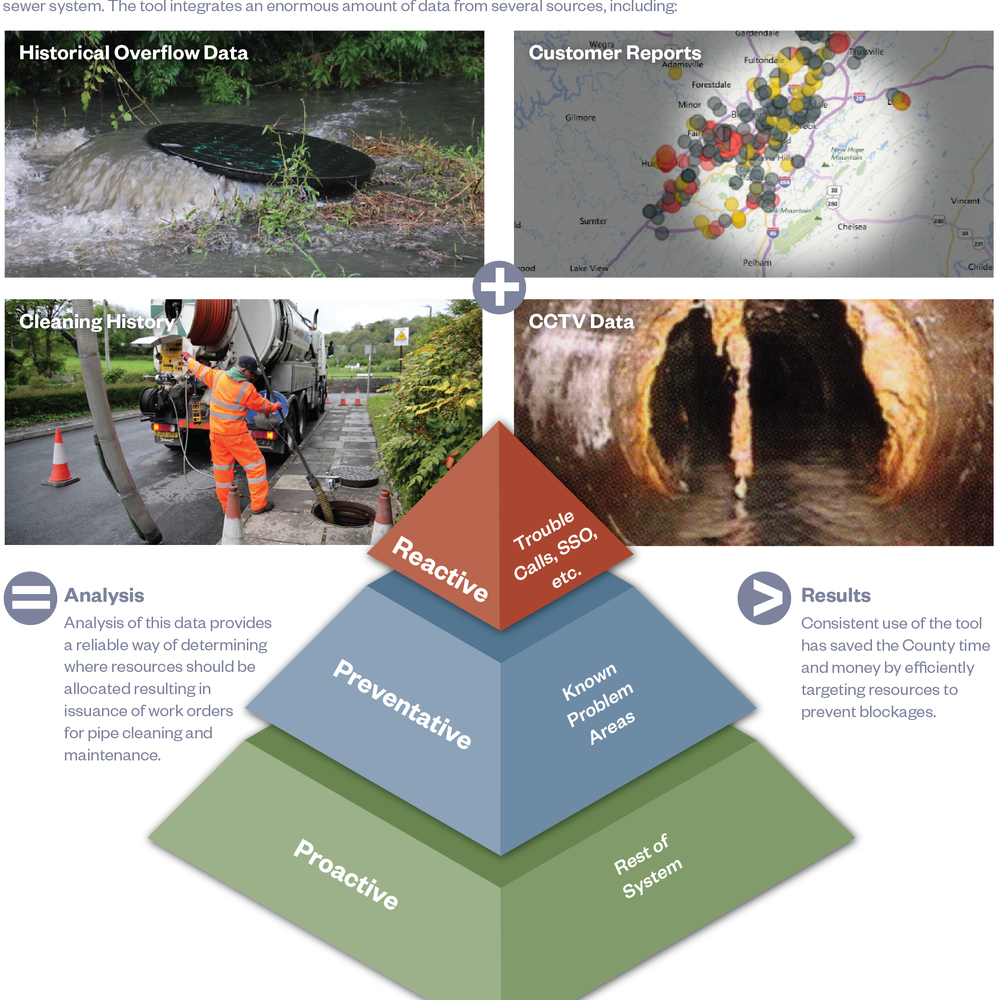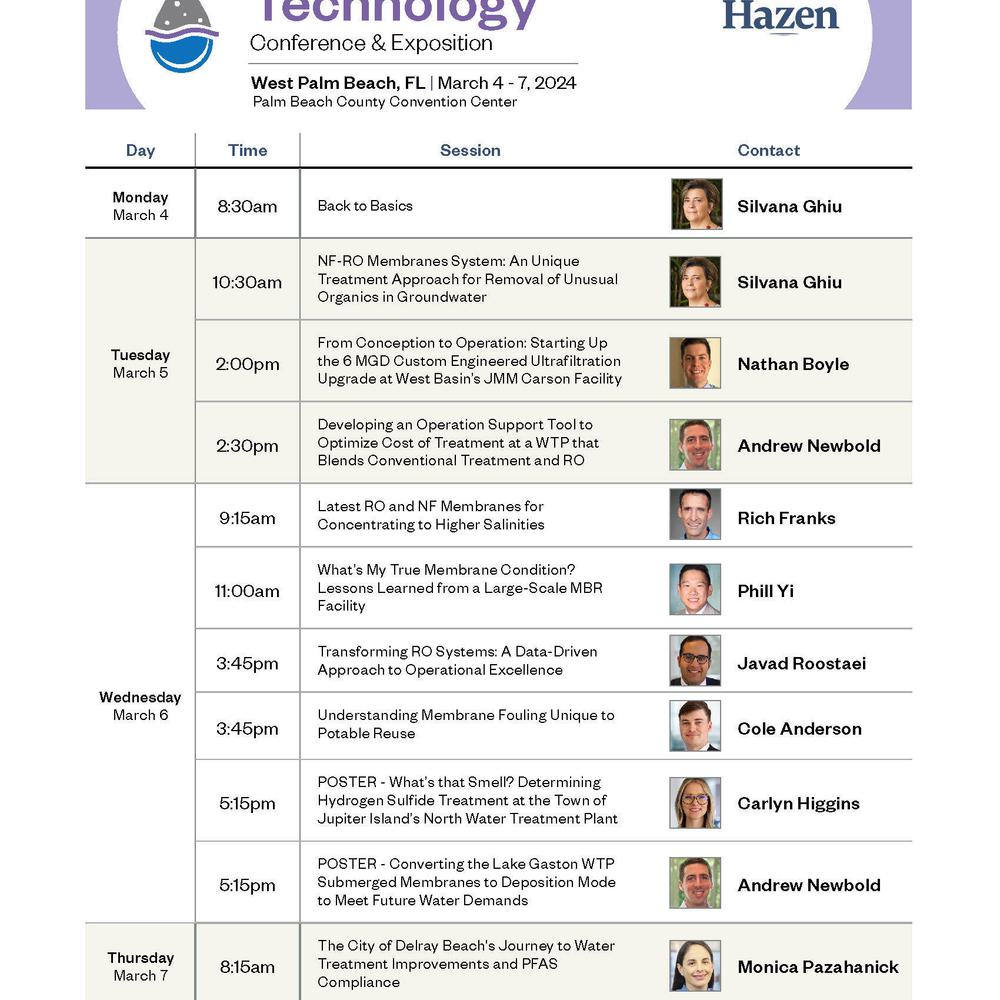Realizing the Benefits of Process Advisory Digital Twins
Benjamin Stanford PhD, Bryan Oldham PMP, CSM, Ryan Nagel PE, PMP, ENV SP, Paul Pitt PhD, PE, BCEE, Alyssa Mayer PE - Hazen
Digital twin is a broad term used to describe the virtual representation of physical assets and systems that enable users to simulate decisions and analyze results.
Varying widely in complexity and scale, digital twins are typically developed to deliver specific benefits to the user, such as adding greater certainty to capital planning decisions, planning for potential disruptions to typical operations, or providing training to operators of a new or upgraded facility.
From basic models for predicting the formation of disinfection byproducts or estimating chemical dosing, to more complex models that provide 3-D representation of a facility (e.g., 3D BIM), digital twins can also include fully interactive process, collection, or distribution system simulators. Most importantly, they provide a way for operators, supervisors, and others at the utility to confirm theories in a virtual environment without hindering the actual treatment process.
Related Topics:

THE DIGITAL TWIN CONTINUUM demonstrates the range of complexity and how they can be leveraged to support the entire spectrum of utility needs, from long-term planning (A) to fully automated real-time operations (B). Digital twins can grow over time (C) to encompass more assets, systems, and capabilities.
Finding Your Digital Twin
With mobile devices and computers able to store more information and handle more complex calculations than ever before, there has been a quantum leap in the ability to leverage digital twins for all aspects of utility asset planning, design, operation, and maintenance. These leaps in technology have made digital twins a solution that can encompass a wide spectrum of tools depending on their intended use. One popular digital twin is a virtual representation of a physical structure used to inform asset planning, design, construction, or maintenance, such as a GIS utility network representing a water distribution system or a Building Information Model (BIM) to represent facility assets.
Another popular version is a process representation to support system operational planning, training, and even real-time control. These process digital twins can be hydraulic, biological, and/or physiochemical process models. They may be empirical, mechanistic—or both—and may use machine learning tools for model development and implementation. Facility and process representations can even be combined for highly sophisticated digital twins to support powerful operational models and visualizations.
Digital twins are not necessarily a high-priced or complex endeavor – by looking at the digital assets already in use at your utility, you may be surprised to see how far along the digital twin spectrum you already are.
Process Advisory Digital Twins
Wastewater process models developed using commercial simulators (such as Biowin, GPS-X,or SUMO) are often employed for wastewater treatment facility design or process optimization planning. These models are complex and require detailed user training, limiting the number of staff who can run or modify simulations. Process advisory digital twins help overcome this operational barrier, expanding the number of staff who can leverage the model.
These twins can be utilized for hands-on training or for process optimization, acting as a “flight simulator” to test the outcomes of potential process decisions. Using input from facility operators during development ensures a user-friendly interface and output visualizations that empower staff to develop and test their own ideas for optimization without affecting actual facility operations. They are built and deployed modularly, so that the level of effort and complexity keeps pace with a utility’s desired adoption of the tool.
Enhanced versions of these process advisory digital twins can be linked to real-time data streams (e.g., SCADA
inputs, system behavior, and weather data) and predictive analytics to
identify difficult situations before they happen, allowing staff to
proactively address—or prevent—the situation rather than react to it.
Machine learning models can also be integrated to identify and visualize
data patterns or to provide predictions in conjunction with mechanistic
process models. Overall, a process advisory digital twin can be a great
steppingstone for utilities considering an investment in digital twin
technology, providing significant operational benefits and the framework
for expansion into a more comprehensive and predictive tool.

Hazen worked with Greensboro to create a custom process advisory digital twin to assist with start-up. The goal of the twin was to train staff on the new nitrogen removal process, familiarize them with the flexibility that the new design provided, and empower them to continue to optimize the process after start-up.
Building a Twin for the City of Greensboro
The City of Greensboro (NC) recently converted the T. Z. Osborne Water Reclamation Facility (TZO WRF) from a 2-stage biological process to a 5-stage biological process to address new effluent total nitrogen (TN) limits. Hazen worked with Greensboro to create a custom process advisory digital twin to assist with start-up.
The goal of the twin was to train staff on the new nitrogen removal process, familiarize them with the flexibility that the new design provided, and empower them to continue to optimize the process after start-up. The twin is based on a process model of the TZO WRF, calibrated with on site-specific data to provide accurate mixed liquor suspended solids (MLSS) concentration production and effluent quality predictions. Detailed training modules were created to train facility operators on the new biological treatment process configuration. Both small and large group demonstrations were used to gather input and staff feedback on the twin’s functionality during development.
The twin is a web-based application that can be launched by multiple staff on any device (e.g., tablet, laptop) and was recently deployed for operator use in start-up and day-to-day operations. Its infrastructure includes provisions for future expansion: to allow dynamic inputs and outputs, to accept real-time data, or to link up with other predictive tools to create a more comprehensive operations support tool.










